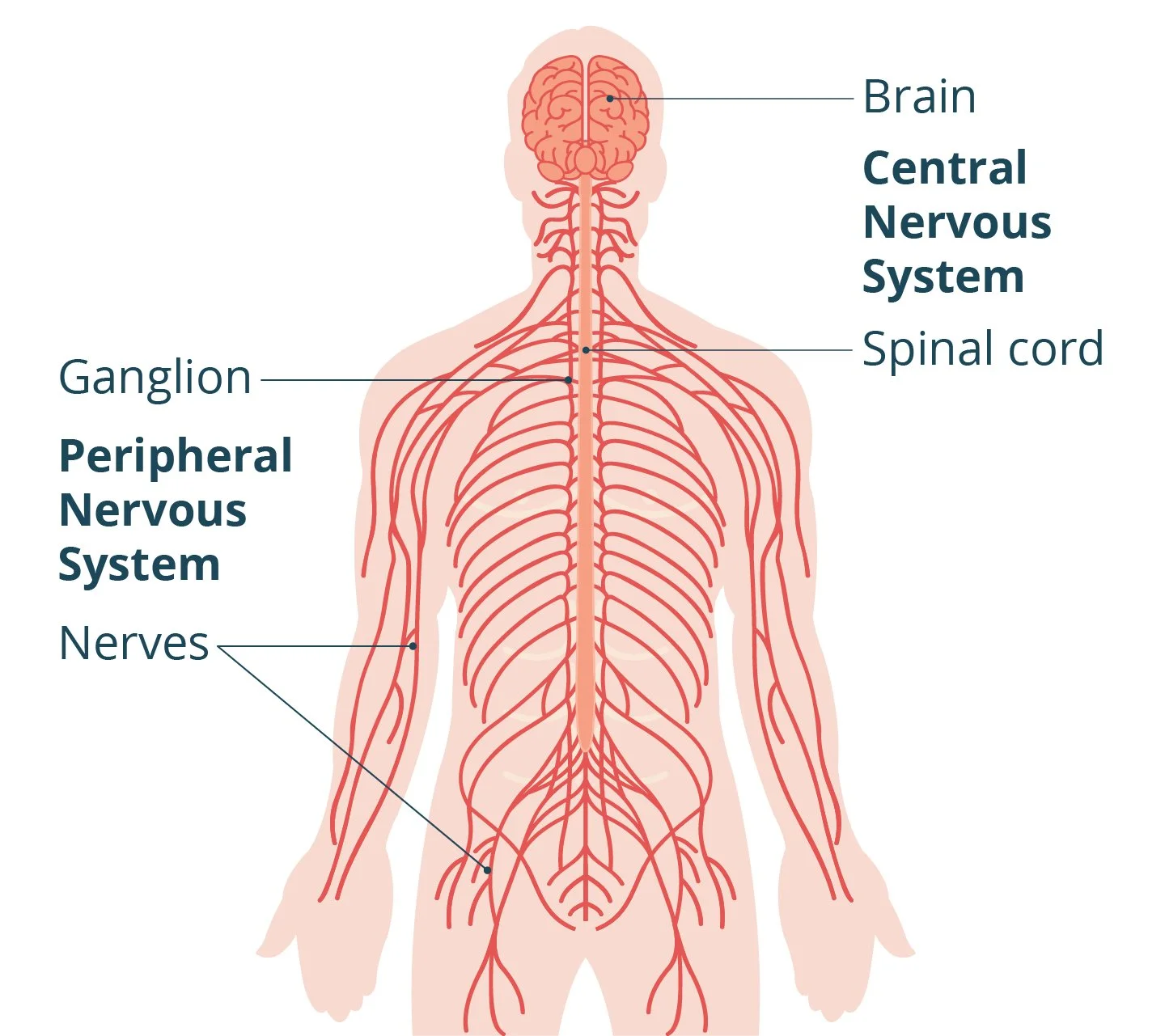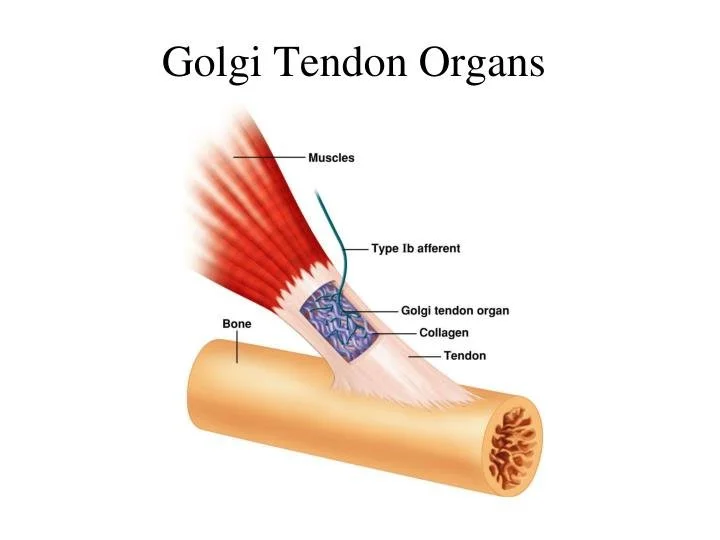The Invisible Ceiling: How Your Nervous System Shapes Strength
hen I was deep into powerlifting, chasing personal records was the highlight of my training. There’s nothing like the rush of loading a barbell with more weight than you’ve ever lifted, setting up under the bar, and feeling that mix of nerves and excitement. But I’ll be honest — some days were frustrating.
There were times I’d go in confident, warmed up, ready to move the weight, and it just wouldn’t budge. The bar felt glued to the floor, or I’d get halfway through a squat and stall out completely. What made it even more confusing was that I had lifted that exact weight before. My muscles were strong enough — I knew they were. Yet my body wouldn’t cooperate.
At the time, I chalked it up to having a bad day or not eating enough the night before. But looking back, it wasn’t my muscles that failed me. It was something harder to see — my nervous system stepping in and saying, “Not today.”
That’s the invisible ceiling we don’t talk about enough in fitness. We spend so much time focused on muscle size, strength numbers, or calorie intake that we forget the brain is really in charge. And sometimes, it limits us long before our muscles actually reach their true potential.
Muscles vs. Nervous System — Who’s Really in Charge?
Muscles don’t fire on their own. Every rep, every contraction, starts with your nervous system. Your brain recruits motor units (bundles of muscle fibers and the nerve that activates them). The more motor units you can recruit, the more force you can generate.
The process works like this:
Your brain sends an electrical signal down a motor neuron.
At the neuromuscular junction, that signal releases acetylcholine, a neurotransmitter.
This sparks sodium and calcium exchange, leading to muscle fiber contraction.
The stronger and faster those signals, the more muscle you can access. That’s why research shows most strength gains in the first weeks of lifting are neural, not muscular (Carroll et al., 2001).
Protective Inhibition — Your Body’s Built-In Safety Brake
Your body has an incredible way of keeping you safe, even when you don’t realize it. Inside your tendons are Golgi tendon organs (GTOs) — tiny sensory receptors that act like tension gauges. They’re constantly monitoring how much force your muscles are producing.
Here’s the science:
When muscle tension gets too high, the GTOs send signals up through Ib afferent neurons to the spinal cord.
The spinal cord then activates inhibitory interneurons, which reduce the firing of the motor neurons driving that muscle.
The result? Your muscle output is cut down in real time — essentially a forced “power-off” switch — to prevent the tendon from tearing or the muscle from rupturing.
This process is called autogenic inhibition. It’s protective by design, but it also creates that frustrating moment where you feel like your body “shuts down” in the middle of a heavy rep.
The interesting part is that the threshold of GTO activation isn’t fixed. With consistent strength training, the nervous system raises the threshold, meaning it learns to tolerate higher levels of tension before pulling the plug (Sale, 1988). This adaptation is one of the reasons lifters can handle heavier and heavier weights over time without injury.
Think of it like this: the first time you put your hand near a hot stove, you recoil instantly. But over time, if you train under safe but challenging conditions, your body learns the difference between “truly dangerous” and “manageable.” The same thing happens with your GTOs — smart, progressive loading convinces your nervous system that higher forces are safe.
That’s why experienced lifters don’t just get stronger because their muscles are bigger. They get stronger because their nervous system literally stops holding them back as much.Heavy vs. Light Lifting: Why Rep Ranges Matter for the Nervous System
Different rep ranges send different messages to your nervous system:
Low reps, heavy loads (1–5 reps, >80% 1RM):
High CNS demand.
Maximal motor unit recruitment.
Improves rate coding (speed of neural firing).
Builds raw strength.
Moderate reps (6–12 reps, 65–80% 1RM):
Blend of neural efficiency + hypertrophy.
Builds size and strength together.
High reps (12+ reps, <65% 1RM):
Minimal CNS involvement.
Focused on muscular endurance and energy systems.
This explains why lifting heavy feels so draining — your muscles recover quickly, but your nervous system takes longer to bounce back.
Neural Adaptations at the Cellular Level
Strength training creates neural changes you can’t see in the mirror but feel under the bar:
Increased motor unit recruitment → you can “switch on” more fibers.
Better synchronization → fibers fire in unison, producing smoother, stronger lifts.
Reduced neural inhibition → your brain eases off the safety brake.
Stronger neuromuscular junctions → nerve-to-muscle connections become more efficient, sending faster, more powerful signals.
These cellular-level adaptations explain why beginners often double their strength before their body composition changes.
Why Periodization and Progressive Overload Matter
Your nervous system thrives on challenge, but it also has limits. If you push heavy weights all the time without backing off, your central nervous system (CNS) accumulates fatigue. You’ll feel this as sluggish bar speed, poor coordination, disrupted sleep, or even mental burnout. On the flip side, if you only ever train light, your nervous system never learns how to recruit high-threshold motor units — the ones responsible for your maximum strength and power.
That’s where two key training principles come in: progressive overload and periodization.
Progressive Overload
Progressive overload is the gradual increase of training demands — adding weight, reps, sets, or reducing rest. At a nervous system level, this forces adaptation by:
Recruiting more motor units.
Increasing the firing rate of motor neurons (rate coding).
Refining coordination between prime movers and stabilizers.
Without it, both your muscles and your nervous system plateau. It’s like practicing the same skill at the same difficulty forever — you never level up.
Periodization
Periodization is the structured cycling of intensity and volume over time. Rather than lifting the same way year-round, you move through phases that emphasize hypertrophy, strength, or recovery.
For your nervous system, this matters because it:
Manages CNS fatigue: High-intensity training creates central fatigue (Taylor et al., 2016). Cycling lighter weeks gives the nervous system time to recover.
Raises the ceiling gradually: By alternating between moderate and heavy loads, you teach the nervous system to tolerate higher thresholds safely.
Prepares you to peak: Athletes can time neural “priming” phases right before competition, ensuring the CNS is fresh and ready.
Think of your nervous system like your phone battery. Heavy lifting drains it quickly. Periodization is your charging cycle — it keeps the system running long-term.
A Mesocycle Example: Putting It Into Practice
Here’s how progressive overload and periodization work together across a 12-week block (mesocycle):
Weeks 1–4: Accumulation (Hypertrophy & Base Strength)
6–12 reps @ 65–75% 1RM.
Focus: build muscle, reinforce technique. Neural demand is moderate, giving your CNS room to adapt.
Weeks 5–8: Intensification (Neural Adaptation)
4–6 reps @ 75–85% 1RM.
Focus: heavier weights to train high-threshold motor unit recruitment. CNS demand increases.
Weeks 9–11: Realization (Peak Neural Output)
1–3 reps @ 85–95% 1RM.
Focus: maximal strength and CNS efficiency. This is where the nervous system is pushed hardest, so recovery is crucial.
Week 12: Deload
Lighter loads, reduced volume.
Focus: restore CNS function, consolidate gains, prep for the next block.
This cycle could repeat with new goals — power, hypertrophy, or sport-specific performance. For athletes, it ensures they’re strongest during competition season. For everyday lifters, it prevents burnout while keeping progress steady.
The Bigger Picture — Training Beyond Muscle
At the end of the day, strength training isn’t just about building bigger quads or stronger glutes. It’s about training your whole system — and that includes your nervous system. Every time you walk up to a barbell, your brain is in charge of deciding how much strength you’re actually allowed to use. Sometimes it lets you unleash it. Other times, it holds you back because it doesn’t feel safe.
That’s why strength training is so much more than just “lifting heavy things.” It’s a conversation between your body and your brain. With the right kind of programming — progressive overload, planned phases of training, and proper recovery — you can gradually convince your nervous system to raise that invisible ceiling and let you access more of what’s already there.
When I think back to my powerlifting days, I realize the biggest progress didn’t come from the weeks my muscles looked different in the mirror — it came from the weeks my nervous system finally caught up and trusted me under the bar. That’s when PRs started to fall.
So if you’re frustrated with a plateau, don’t beat yourself up or assume you’re weak. It might not be your muscles at all. It might just be your nervous system saying, “Not yet.” The good news? With smart, consistent training, you can change that message. Over time, you teach your body to trust your strength, and that’s when you start unlocking what you’re truly capable of.
Because strength isn’t just about how much weight you can move today. It’s about building a system — muscles, nerves, and confidence — that will keep moving with you for years to come.
Hope that helps!
Happy Exercising,
Robyn
References
Avela, J., & Komi, P. V. (1998). Interaction between muscle stiffness and stretch reflex sensitivity after long-term stretch-shortening cycle exercise. International Journal of Sports Medicine, 19(4), 290–295.
Carroll, T. J., Riek, S., & Carson, R. G. (2001). Neural adaptations to resistance training: implications for movement control. Sports Medicine, 31(12), 829–840.
Enoka, R. M., & Duchateau, J. (2016). Translating fatigue to human performance. Medicine & Science in Sports & Exercise, 48(11), 2228–2238.
Moran, A., Guillot, A., MacIntyre, T., & Collet, C. (2012). Re-imagining motor imagery: Building bridges between cognitive neuroscience and sport psychology. British Journal of Psychology, 103(2), 224–247.
Sale, D. G. (1988). Neural adaptation to resistance training. Medicine and Science in Sports and Exercise, 20(5 Suppl), S135–S145.
Taylor, J. L., Amann, M., Duchateau, J., Meeusen, R., & Rice, C. L. (2016). Neural contributions to muscle fatigue: from the brain to the muscle and back again. Medicine & Science in Sports & Exercise, 48(11), 2294–2306.


